Story of Anarkali
Anarkali - Who Was She?
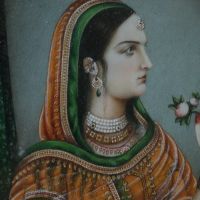
The story of Anarkali exists somewhere between fact & fiction.
This is because, during the Mughal era, there were many palace intrigues, complicated relationships, and schemes among the large, extended families of nobles and ordinary service people.
That is why many secrets were buried in the hearts and minds, and the final truth could sometimes never be revealed.
It is only an effort of picking up some disconnected pieces and trying to reconnect the dots to make up a story from the underneath. According to some, it is just a myth and a fictional story. However, even if it is a myth or fiction, it still exists. So take it like that.
The interesting thing about history is that it can hardly be one hundred percent true. Even if someone has witnessed it with his or her own eyes, it will just be the interpretation of that individual.
So read this story of Anarkali with an open mind and you may contemplate and draw your own conclusions if you may wish.
The Famous version of the story of anarkali
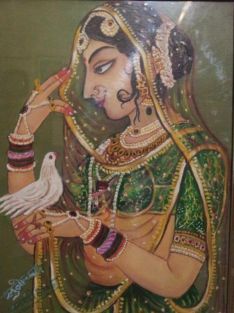
As per the most famous legendary version, Anarkali (pomegranate blossom) was a legendary slave girl from Lahore,Punjab (in present day Pakistan).
She was supposedly ordered to be buried alive between two walls by Mughal emperor Akbar for having an illicit relationship with the crown prince Salim, later to become Emperor Jahangir.
Due to the lack of evidence and sources, the story is widely accepted to be either false or heavily embellished. This story was originally written by Indian writer Abdul Halim Sharar and on the first page of that book he had clearly mentioned it to be a work of fiction.
Nevertheless, her story is cherished by many and has been adapted into literature, art and cinema.
The story goes like that the Great Mughal emperor Akbar and his wife, Mariam-uz-Zamani (Jodha Bai), had a son named Prince Saleem (later Emperor Jahangir).
He was considered to be a spoiled and rude boy. Akbar sent his son away to the army for fourteen years to learn the discipline required to rule the empire.
Finally, Akbar allowed this son to return to the main palace in Lahore. Since this day was one of great celebration, the harem of Akbar decided to hold a great Mujra (dance performance) by a beautiful girl named Nadira, daughter of Noor Khan Arjun.
Since she was an exceptional beauty, "like a blossoming flower", Akbar called her Anarkali (blossoming pomegranate).
During her first and famous Mujar in Lahore Prince Saleem fell in love with her and it later became apparent that she was also in love with him.
Later, they both began to see each other although the matter was kept quiet. Later, however, Prince Saleem informed his father, Akbar, of his intention to marry Anarkali and make her the Empress.
The problem was that despite her fame in Lahore, she was a dancer and a maid and not of noble blood.
So Akbar (who was sensitive about his own mother, (Hamida Banu Begum), being a commoner) forbade Saleem from seeing her again.
Prince Saleem and Akbar had an argument that later became very serious after Akbar ordered her arrest and placed her in one of the jail dungeons in Lahore.
After many attempts, Saleem and one of his friends helped Anarkali escape and hid her near the outskirts of Lahore. Then, the furious Prince Saleem organized an army (from those loyal to him during his fourteen years there) and began an attack on the city; Akbar, being the emperor, had a much larger army and quickly defeated Prince Saleem's force.
Akbar gave his son two choices: either to surrender Anarkali to them or to face the death penalty. Prince Saleem, out of his true love for Anarkali, chose the death penalty. Anarkali, however, unable to allow Prince Saleem to die, came out of hiding and approached the Mughal emperor, Akbar.
She asked him if she could be the one to give up her life in order to save Prince Saleem, and after Akbar agreed, she asked for just one wish, which was to spend just one pleasant night with Prince Saleem.
After her night with Saleem, Anarkali drugged Saleem with a pomegranate blossom. After a very tearful goodbye to the unconscious Saleem, she left the royal palace with guards.
She was taken to the area near present-day Anarkali Bazaar in Lahore, where a large ditch was made for her. She was strapped to a board of wood and lowered in it by soldiers belonging to Akbar.
They closed the top of the large ditch with a brick wall and buried her alive.
Second Version of the Story of Anarkali
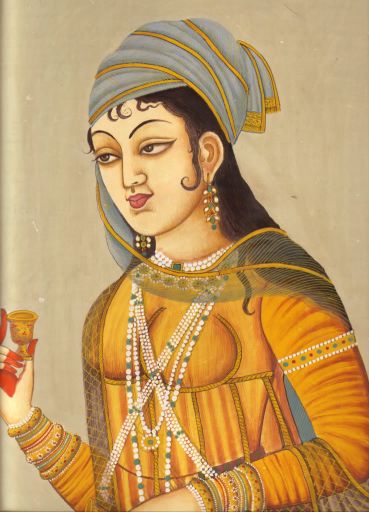
Second Version of The Story
A second version of the story says that the Emperor Akbar helped Anarkali escape from the ditch through a series of underground tunnels with her mother only with the promise of Anarkali to leave the Mughal empire and never return. Thus it is not known whether she survived or not.
Another quite popular version states that she was immured alive in a wall.
Watch The Article Video
Other Viewpoints on Anarkali Story
There are conflicts among the scholars on the authenticity of Anarkali's incident.
There are many opposing and confusing views such as mentioned below :-
The earliest writers to report the love affair of Salim were two British travellers – William Finch and Edward Terry. William Finch reached Lahore in February 1611 (only eleven years after the supposed death of Anarkali), to sell the indigo he had purchased at Bayana on behalf of the East India Company.
His account, written in early seventeenth century English, gives the following information: In the suburbs of the town, a fair monument for Prince Daniyal and his mother, one of the Akbar’s wives, with whom it is said Prince Salim had a liaison. Upon the notice of the affair, King Akbar caused the lady to be enclosed within a wall of his palace, where she died.
The King Jahangir, in token of his love, ordered a magnificent tomb of stone to be built in the midst of a walled four-square garden provided with a gate.
The body of the tomb, the emperor willed to be wrought in work of gold....
Edward Terry who visited a few years after William Finch writes that Akbar had threatened to disinherit Jahangir, for his liaison with Anarkali, the emperor’s most beloved wife. But on his death-bed, Akbar repealed it.
Basing his analysis on the above two Britishers’ accounts, Abraham Eraly, the author of The Last Spring: The Lives and Times of the Great Mughals, suspects that there "seems to have been an oedipal conflict between Akbar and Salim." He also considers it probable that the legendary Anarkali was nobody other than the mother of Prince Daniyal.
Eraly supports his hypothesis by quoting an incident recorded by Abul Fazl, the court-historian of Akbar.
According to the historian, Salim was beaten up one evening by guards of the royal harem of Akbar. The story is that a mad man had wandered into Akbar’s harem because of the carelessness of the guards.
Abul Fazl writes that Salim caught the man but was himself mistaken for the intruder. The emperor arrived upon the scene and was about to strike with his sword when he recognised Salim.
Most probably, the intruder was no other than Prince Salim and the story of the mad man was concocted to put a veil on the indecency of the Prince.
But the accounts of the British travellers and consequently the presumption of Eraly is falsified when one comes to know that the mother of prince Daniyal had died in 1596 which does not match the dates inscribed on the sarcophagus.
Another scholar, Muhammad Baqir, the author of Lahore Past and Present opines that Anarkali was originally the name of the garden in which the tomb was situated, but with the passage of time, the tomb itself came to be named as that of Anarkali’s.
This garden is mentioned by Dara Shikoh, the grandson of Jahangir, in his work Sakinat al-Auliya, as one of the places where the Saint Hazrat Mian Mir used to sit. Dara also mentions the existence of a tomb in the garden but he does not give it any name.
Historian's Version
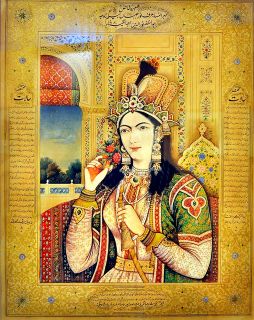
Muhammad Baqir believes that the so-called tomb of Anarkali actually belongs to the lady named or entitled Sahib-i Jamal, another wife of Salim and the mother of the Prince’s second son Sultan Parvez, and a daughter of the noble Zain Khan Koka.
This conclusion is also partially faulty. The mother of Sultan Parviz was not a daughter of Zain Khan Koka but the daughter of Khawaja Hasan, the paternal uncle of Zain Khan.
Of course, subsequently, the daughter of Zain Khan was also married to Salim, on 18 June 1596.
It is recorded in Akbar Nama that Jahangir "became violently enamoured of the daughter of Zain Khan Koka. H.M. (Akbar) was displeased at the impropriety, but he saw that his heart was immoderately affected, he, of necessity, gave his consent."
The translator of Akbar Nama, H. Beveridge, opines that Akbar objected to the marriage, because the Prince was already married "to Zain Khan’s niece" (actually the daughter of paternal uncle of Zain Khan, and hence his sister). Akbar objected to marriages between near relations. But we do not know the date of death of the either of these two wives of Jahangir.
Noted art-historian R. Nath argues that there is no wife of Jahangir on record bearing the name or title of Anarkali to whom the emperor could have built a tomb and dedicated a couplet with a suffix Majnun.
He considers it "absolutely improbable that the grand Mughal emperor would address his married wife as yar designate himself as majnun and aspire to see her face once again. Had he not seen her enough?
Obviously she was not his married wife but only his beloved, to whom he would take the liberty to be romantic and a little poetic too, and it appears to be a case of an unsuccessful romance of a disappointed lover....
The prince could not save her, though it is on record that he was so unhappy with his father in this year 1599 that he defied his orders and revolted.
It may be recalled that Mehrunissa (later Nurjahan Begum) was also married to Sher Afgan the same year and the young Prince was so dejected and disturbed on the failure of his two romances and annihilation of his tender feelings of love that he went as far as to defy Akbar."
The Death of Anarkali
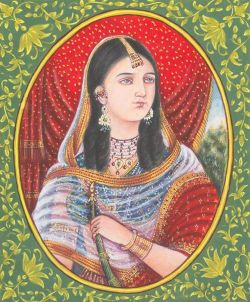
To be simple there are many views over the death of Anarkali, but the most prominent are:
First View
1. Anarkali or "Sharrafunnisa" though cemented behind the wall by the order of Akbar, was released by Akbar on request of Anarkali's mother 'Jillo Bai' as Emperor Akbar promised Anarkali's mother one wish in her life.
Thereby she escaped through a secret root through the outskirts of Delhi and then went to Lahore and lived there till death. There exists a tomb of Anarkali in Lahore.
It was in Lahore that Prince Salim set eyes upon her, she was Akbar's favourite dancing girl).
Akbar, legend has it, was furious and had the lady entombed outside the fort. Whether this story is fact or fiction, a modest tomb stands in Lahore believed to have been built by the lovesick prince (in 1615).
The gravestone in the Tomb bears the tragic inscription;
Could I behold the face of my beloved once more,
I would thank God until the day of resurrection.
The tomb was converted into a church during British occupation and now the building serves as an archive (with a collection of old prints) within the compound of the Government Record Office.
On the lower Mall Road, inside the grounds of Punjab Secretariat lies the tomb of Anarkali. The tomb is accessible to the public.
Anarkali (Pomegranate Blossom) was a legendary favourite in the harem of Emperor Akbar. Apparently she had an affair with Akbar's son, Prince Salim.
One day Akbar saw her return Salim's smile, and as punishment she was buried alive in 1599. When Salim became Emperor Jahangir, he built her a magnificent tomb.
The tomb, built in 1615 is a forerunner of the famous Taj Mahal : it is octangle, with a huge dome in the centre surrounded by eight octangle cupolas supported by columns.
Second View
2. The second view is that she after the death of Akbar was recalled by Salim (Jehangir) and they married and was given a new Identity of Nur Jehan.
Final Thoughts on Anarkali
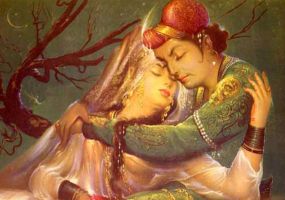
Please note that there is no authentic proof that the story of Anarkali is true.
Anarkali has been the subject of a number of Indian, Bangladeshi and Pakistani books, plays and films.
The earliest and most celebrated play 'Anarkali' was written by Imtiaz Ali Taj and performed in 1922; whereas the earliest film is Loves of a Moghul Prince released in 1928.
Bina Raj portrayed Anarkali in Anarkali, a 1953 Indian film.
In Pakistan, another Anarkali film was released in 1958 with Noor Jehan in the lead role
Later on in 1960, K.Asif's Mughal-e-Azam was released in India with actress Madhubala in the role of Anarkali and Dilip Kumar as Prince Salim.
Iman Ali also portrayed Anarkali in Shoaib Mansoor's short music video series on the theme Ishq (love) in 2003. Reference has also been made in Housefull 2’s song "Anarkali Disco Chali".
Having known many different angles, it seems that Story of Anarkali still poses some mystery for many especially for Lahoris in particular and the people of sub continent in general.
Perhaps the story is still fresh for many modern filmmakers too.
The material has been researched and compiled by consulting online sources.
For more you can also read at Wiki on Anarkali
For More History Related Stories, Please visit History Articles

New! Comments
Have your say about what you just read! Leave me a comment in the box below.